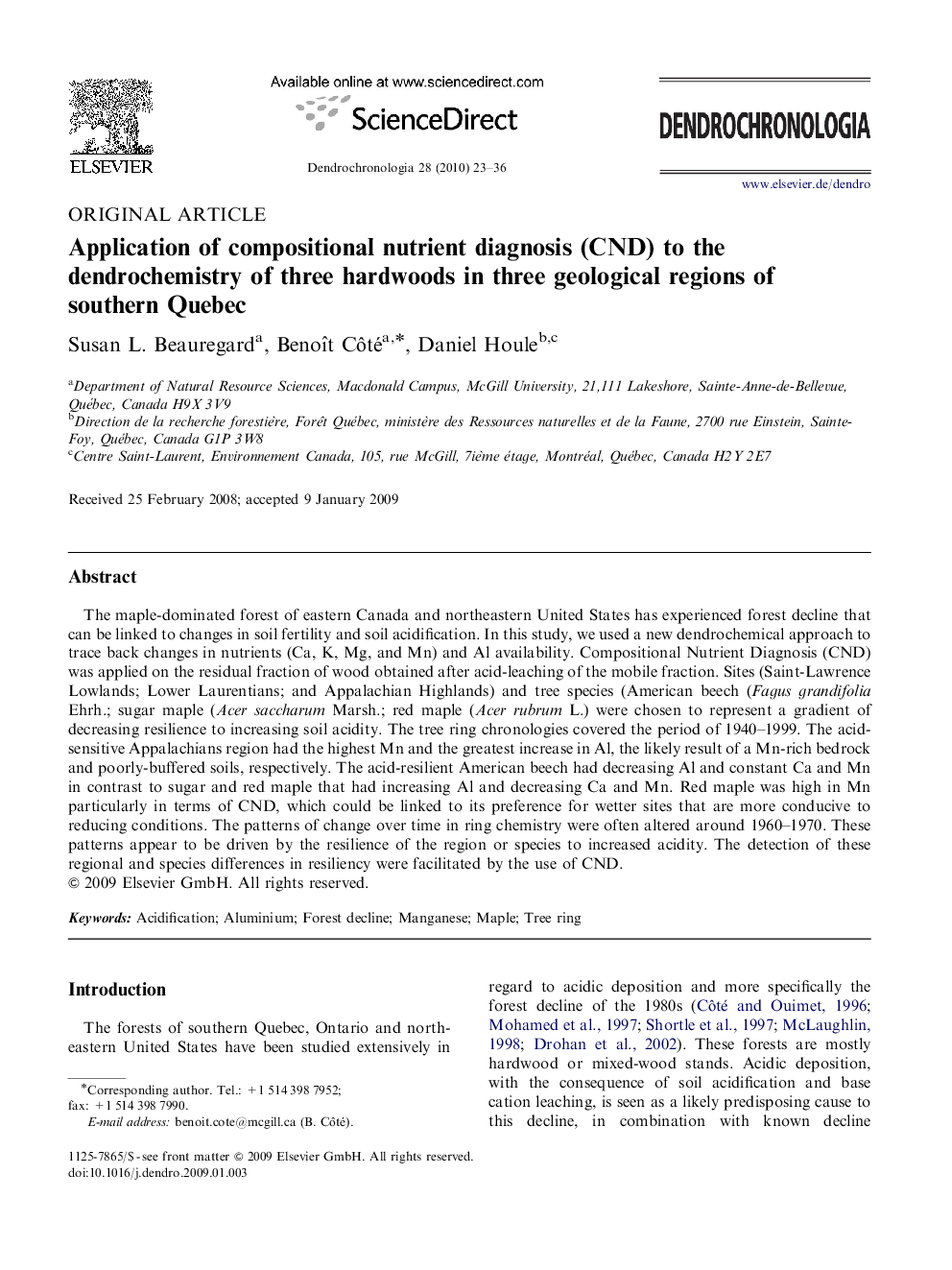| Article ID | Journal | Published Year | Pages | File Type |
|---|---|---|---|---|
| 85699 | Dendrochronologia | 2010 | 14 Pages |
The maple-dominated forest of eastern Canada and northeastern United States has experienced forest decline that can be linked to changes in soil fertility and soil acidification. In this study, we used a new dendrochemical approach to trace back changes in nutrients (Ca, K, Mg, and Mn) and Al availability. Compositional Nutrient Diagnosis (CND) was applied on the residual fraction of wood obtained after acid-leaching of the mobile fraction. Sites (Saint-Lawrence Lowlands; Lower Laurentians; and Appalachian Highlands) and tree species (American beech (Fagus grandifolia Ehrh.; sugar maple (Acer saccharum Marsh.; red maple (Acer rubrum L.) were chosen to represent a gradient of decreasing resilience to increasing soil acidity. The tree ring chronologies covered the period of 1940–1999. The acid-sensitive Appalachians region had the highest Mn and the greatest increase in Al, the likely result of a Mn-rich bedrock and poorly-buffered soils, respectively. The acid-resilient American beech had decreasing Al and constant Ca and Mn in contrast to sugar and red maple that had increasing Al and decreasing Ca and Mn. Red maple was high in Mn particularly in terms of CND, which could be linked to its preference for wetter sites that are more conducive to reducing conditions. The patterns of change over time in ring chemistry were often altered around 1960–1970. These patterns appear to be driven by the resilience of the region or species to increased acidity. The detection of these regional and species differences in resiliency were facilitated by the use of CND.
